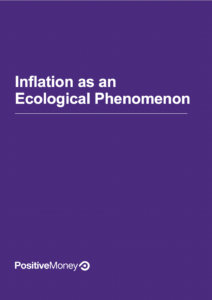Inflation as an Ecological Phenomenon
Climate change, environmental degradation, and global energy markets are all sources of price instability, with important implications for inflation forecasting and macroeconomic policy.
Published February 2024

Climate change, environmental degradation, and global energy markets are all sources of price instability, with important implications for inflation forecasting and macroeconomic policy. Central banks will have to deepen their understanding of these drivers of inflation and adapt their policymaking accordingly, recognising that achieving environmental targets is necessary to avoid persistent environment- related macroeconomic instability.
While primary responsibility for the transition to a sustainable economy lies with fiscal, industrial, and environmental authorities, new approaches to monetary policy and improved inflation forecasting should support these efforts.
PDF DOWNLOADS:
Download full report here
(Free, PDF, 28 pages)
Energy’s relevance to price stability is widely acknowledged, as fossil fuel prices driving inflation (‘fossilflation’) is a longstanding phenomenon, most recently triggered by Russia’s invasion of Ukraine. The inflationary effects of climate change (‘climateflation’) and environmental degradation in a modern context are comparatively novel though increasingly pronounced. Climateflation, which is global in nature yet borne disproportionately by lower income households and countries, occurs primarily through reductions in agricultural activity and damage to crop yields. As environmental disruptions intensify, they will play an increasingly significant role in driving price instability.
In this context, orthodox monetary policy is counterproductive to achieving price stability, as well as governments’ economic, social and environmental objectives. Increasing interest rates fails to address the core drivers of rising energy and food prices, disproportionately hampers investment in capital-intensive green projects, and reduces government’s fiscal space. Instead, central banks should factor environmental considerations into the conduct of monetary policy and explore greater macroeconomic policy coordination with fiscal and industrial authorities. New international monetary arrangements will also be necessary to secure price stability and a just transition.